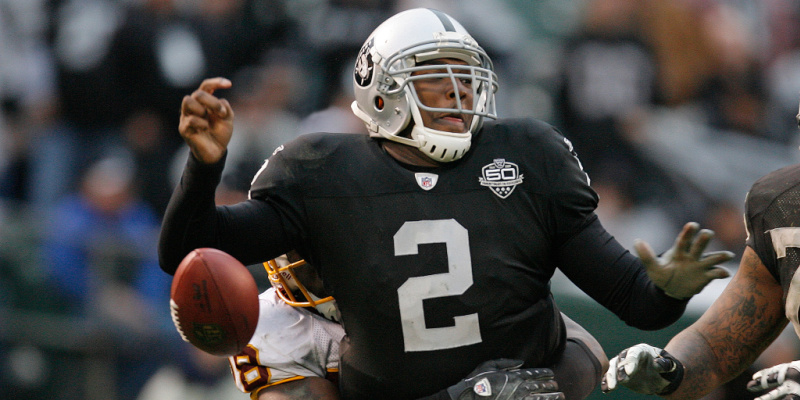Breakdowns
4/6/22
4 min read
Why Are There So Many Misses in the First Round of the NFL Draft?

The incredible growth of the NFL has been a spectacle to watch over the last decade. Franchise values have skyrocketed, even during a pandemic, which has led to teams putting ample investment into their front office staff, analytics team, and scouting department.
With all the resources that NFL teams now have to evaluate players, it begs the question: “Why are there still so many misses in the first round of the NFL Draft?”
Former NFL executive Bill Polian likes to say you have a “50/50 chance of hitting on a 1st round draft pick”. While historical evidence seems to back Polian’s case, Mike Giddings believes there is a better, more effective way to evaluate draft prospects.
Giddings is the owner and president of Proscout Inc. Since 1977, Proscout Inc. has worked with and provided insight for 35 Super Bowl teams and 21 Hall of Fame coaches, owners, and general managers, including 16 of the last 29 NFL Executives of the Year.
Giddings evaluates all draft prospects using his renowned blue-red-puple evaluation strategy. This color coded system is part of Proscout’s player assessment blueprint where blue and red players are those who win for you and purple players are those who you can win with.
Using Giddings’ evaluation metrics, he believes the hit rate of a first round pick producing four or more ‘purple’ years is about 58%, still leaving a 42% miss rate. To increase the success rate of these Day 1 picks, Giddings identifies the outliers for height, weight, and 40-time for each position.
Proscout then circles these players who are in the top or bottom 10% of these categories and considers them ‘physical qualifications’ or PQs. The reason? Giddings does not want un-athletic collegiate athletes who cannot compete at the next level, nor do they want to overvalue specific physical traits that do not correlate to NFL success. Annual evidence suggests that 90% of the players who produced blue-red-purple in the previous season were inside the height-weight-speed parameter.
If front office executives stay within these parameters, the success rate of first round picks jumps from 58% to 66%. Despite the evidence, teams will still convince themselves otherwise and deviate from this rule. This tends to backfire as the legendary Bill Parcells claims “make one exception and next thing you know you have a team full of exceptions.”
Let’s look at past examples of first round picks with outlier height, weight, and 40-times and how their extreme attributes translated to the NFL.
How PQs Translated to NFL
The quarterbacks with circled PQs aren’t Pro Bowlers, instead they include the likes of: Matt Leinart, JaMarcus Russell, Johnny Manziel, and Paxton Lynch (Note: Russell and Manziel each had two PQs). While some teams were tantalized by the potential of Russell’s big arm, his 265-pound frame proved to be difficult as the signal caller. Meanwhile, Manziel and Lynch were at opposite ends of the height spectrum with unique skillsets, yet neither were able to put together a blue-red-purple season.
As for the pass catchers, the NFL success rate is not much better. The names of first round receivers with circled PQs include: Tavon Austin, Kelvin Benjamin, Ted Ginn, and N'keal Harry. However, a few that have been able to overcome the narrative.
Desean Jackson, who was drafted in the second round in 2008, has amounted over 11,000 yards in his outstanding career. Jackson’s elite speed is why he was circled as a PQ; however, even 14 years later very few can keep up with his quickness.
If we continued down the list of circled PQs, looking at each position group, we would find that there are very few players outside of Proscout’s parameters that have found success in the NFL.
While Polian argues that drafting in the first round is a flip of the coin, Giddings believes there is more of an exact science. Using Giddings’ height-weight-40 time physical qualifications, he is able to increase the hit rate of first round picks from 50% to 66%, allowing teams to maximize their draft selections and draft with less risks.








